#the bloodletter
Explore tagged Tumblr posts
Text
Court chapters 52-55



Click to see the rest of the snark & image descriptions



Chapter 52
And just like that, everything goes black.
Chapter 52 summary: Time now having been restored, Jikan rounds on Grace and tells her to stop fucking around with time. This leads to an argument between him and Cassia over Cassia’s (and Grace’s) powers to stop time.
However, Grace’s friends are more hung up over the idea that Grace has powers beyond what she’s already discovered about herself. Cassia has to take a time out from her argument to say that she turned back on the gargoyle genes inside of fetus!Grace, but it was an unknown entity that stopped the seed of her demigod powers when she was really young. It’s only recently that those powers have come back on. And as powerful as she is whenever she touches that green string, it’s only a tiny fraction of her true strength.
Jikan eventually tells them to go find something called the tears of Eleos. If she rubs those tears over the string that connects her to the other gargoyles, they’ll be cured from the poison. He tells them that it’s somewhere in Florida and sends them on their way.
Chapter 53
“A taffy shop?” I ask. “The place that holds the magic of one of the most powerful, ancient gods in the world…is a saltwater taffy shop?”
Chapter 53 summary: Jikan sent them to the city/town they needed to be in, and they quickly figure out that they’re in the right place. The next two and a half pages are nothing but them arguing without anything getting resolved. Finally, they look around and they’re like “Why the hell is it in a saltwater taffy shop?!”
Chapter 54
“Have a nice day,” she calls over her shoulders with a laugh that chills my blood.
Chapter 54 summary: They go into the shop, which the narration spends way too much time describing. All of what the shop looks like is instantly forgotten the second you move on, so literally none of it is actually important.
Anyway, there’s this sexy-scary lady behind the counter, but Macy warns Grace not to approach without permission. That none of them know what kind of creature she is, but she’s not to be messed with. Besides, a sign behind the counter tells customers not to approach without permission, too.
So Grace waits. And after too much time has passed, Grace tries to clear her throat. The lady tells them to leave. Finally, Grace walks up to the counter, pleading desperation. The lady asks what kind of taffy Grace wants, and stupidly, Grace says she’ll have one of every flavour. The lady pulls out a big sampler ball, and Hudson gives her a hundred, and to keep the change.
Plot? What plot? Not in the Crave series.
Chapter 55
“What everyone is looking for when they come to St. Augustine, Florida. The Fountain of Youth. This field is how you get to try to earn it.”
Chapter 55 summary: So now they’re out of options, and know that they’re running out of time. They quickly start arguing again, and it’s so fucking tedious to read. Literally nothing of actual value is said, so let’s move on.
Grace decides to open up the door behind the counter, the one that the employee went through after she sold the taffy to Grace. Through the door is a coliseum, and a huge field. The woman shows up, and says that this is how they’re going to earn their way to the Fountain of Youth.
#Crave series#Court (Crave 4)#Chapter 52#chapter 53#chapter 54#Chapter 55#the bloodletter#Grace (Crave)#plot? what plot?#Macy (Crave)#Hudson Vega
0 notes
Text

Savior.
a scene from our last Curse of Strahd session featuring my cleric PC
#illstration#art#artists on tumblr#character art#painting#curse of strahd#curse of strahd art#dnd 5e#cleric#dnd art#blood cleric#boy's got kavan's spear and his problematic god turned it into a new thing#basically the bloodletter from bloodborne#kasper dunant#he's good aligned i swear
3K notes
·
View notes
Text
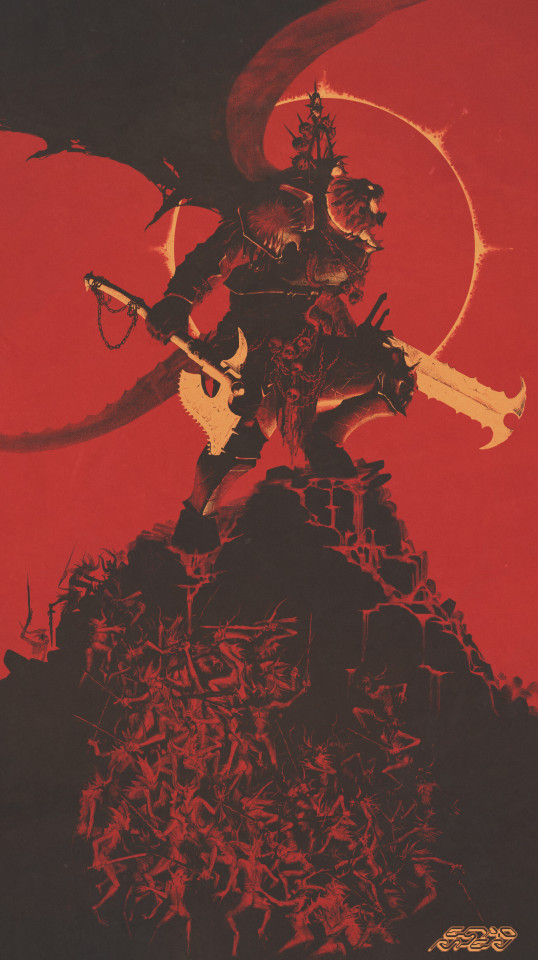
Angron: Red Angel
by Alfie Garland
904 notes
·
View notes
Text
SARRYA THE UNSTOPPABLE, KHORNE BERSERKER: SCRIBBLE GUIDE

separate pics




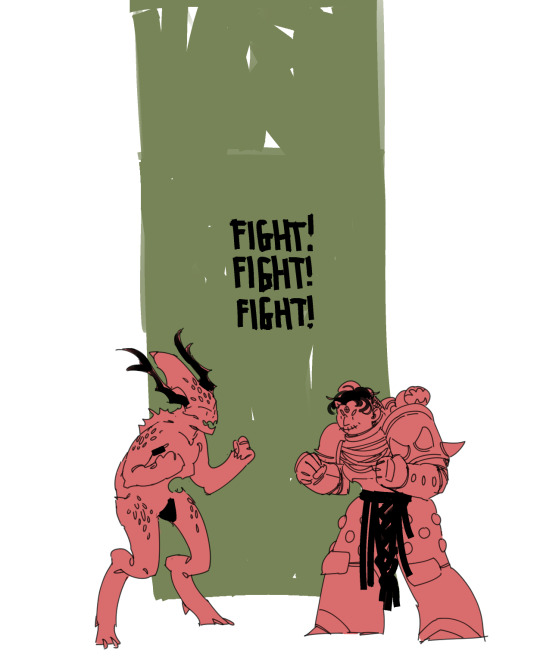


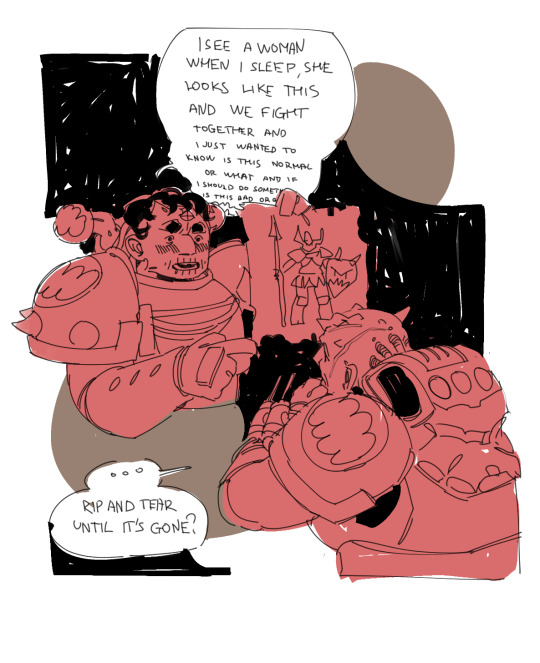

#art#sarrya#warhammer 40k#wh40k#warhammer 40000#wh40k art#khorne#world eaters#bloodletter#khorne berserker#female space marines#female astartes#plasmdraws#plasmomemes
742 notes
·
View notes
Text



Abyssal Bloodletter | A fiery heart tainted by violence. Test design, uninked
103 notes
·
View notes
Note
You know what we need? Batfam Bloodbourne au
Preferably where they're all sent to The Dream but separately and when they all kill gherman and become baby great ones they come back to Gotham and it's Their Dream now. Just Gotham or the world and Gotham is Home and the most like Yharnam, up to you. But I'd love to see them struggle through the brutality, or make peace with it quickly for some (in my mind Tim would be the most stable, Jason would be okay but not great, Tim just seems so,,, adaptable to me, the most insatiable for knowledge so the most accepting of the consequences of getting that knowledge, pros outweigh the cons kinda deal) with the way others were changed and just unsavable. The people of Yharnam are beasts now and the kindest way to deal with them is to put them down even if it's not permanent. And then come out of it irrevocably changed themselves, more than just mentally. The effects it has on them and the world around them. How The Dream ended, but theirs just began and what if it starts in Gotham and slowly spreads? But they're the only great ones in this world so there's no old blood to corrupt people but that doesn't stop death being...odd. Unless they share their blood in experiments to Know what it would do and if they can use it safely for those they care about. (mad scientist Tim my beloved)
Do you see my vision? It's beautiful
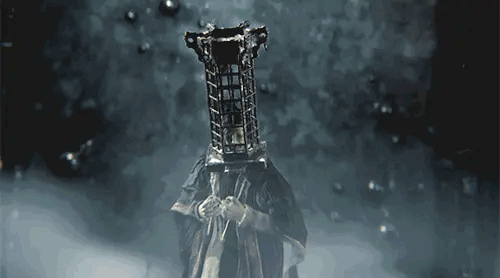
It's wonderful.
Like no joke, I adore Bloodborne, I Love it (Even if I can't play it thanks to getting distracted by all the details in the surroundings & then get murdered lol)
And I wouldn't say Tim is the most adaptable, they all are, but Tim? Compartmentalizes, looks at things logically, straight up turns off his panic at times like it's a switch. But I am also very weak to mad scientist Tim. Even if they probably don't let him do human experiments (not that it stops self-experimentation sometimes)
Gosh I love this. Them still ending up found-family while these utterly horrible things happen around and to them. I wonder if they sometimes take a moment in the dreams and whisper about what they remember before this Living Nightmare. Names they don't know the faces of but know they were important to them. Memories they cling to as they try not to lose what is left of their humanity.
Oh my god, them being the only Great Ones after killing the previous ones? Wonderful idea, I adore it. I bet even if they can take human form still it would be... off. And the more one's Insight is? The more they can see that they're Other.
God the imagery of like, Gotham's moon always being red and thick fog settling across the city each night as their Dream begins is amazing. And I bet that they relish it. I bet they're relieved for normal murder and crime, compared to the Plague of Beasts they had been dealing with what felt like years. Time gets so meaningless with an Endless night full of Deaths over and over.
I bet Gotham looks even more Gothic than before. Actually, you know what? This would be perfect for a No Man's Land situation. For the city to be abandoned only to be held afloat by newborn Gods who no longer quite understand the humans, not with how long the Hunt has stretched on, but care all the same. Idk I just really like this idea in general lol. I am weak to eldritch AUs and Bloodborne is glorious.
#ask answered#Bloodborne Au#batman au#batman#dc#dcu#cryptid batman#cryptid batfam#batfamily#cryptid batfamily#I wonder if Tim has a few birds he fed his blood#I wonder if x-ray machines would show their heads Lined with Eyes#I wonder if cameras don't show the human forms but glimpses of something Other#God i love the hunter's armors and weapons and everything#Oh my god would this mean Batman- they all deserve trick weapons but does this mean batman has a big fukin axe#I fully believe Dick would have something like the bloodletter#Damian has the chikage probably#hyperfixation no don't make me obsess over this-#Bus seriously gimme more ideas please I adore this#bloodborne#bloodborne crossover#bloodborne au
126 notes
·
View notes
Text

#nightwing#wof#wof oc#creatures#seawing#mudwing#skywing#art#Silt and Bloodletter#She met him on a trip to the sea#I love the barbels (?) of seawings
61 notes
·
View notes
Text

by haoyuan li
#warhammer 40k#daemons of chaos#khorne#blood for the blood god#skulls for the skull throne#bloodletter of khorne
135 notes
·
View notes
Text

⥈ 𝕿𝖍𝖊 𝕭𝖑𝖔𝖔𝖉𝖑𝖊𝖙𝖙𝖊𝖗, 𝖕𝖙 𝟏 [𝖙𝖍𝖊 𝖈𝖗𝖚𝖉𝖊𝖘𝖙 𝖔𝖋 𝖗𝖊𝖎𝖓𝖙𝖗𝖔𝖉𝖚𝖈𝖙𝖎𝖔𝖓𝖘 𝖆𝖓𝖉 𝖌𝖆𝖒𝖊𝖘]
Aemond Targaryen x Reader/fem!OC | Daemon Targaryen x Reader/fem!OC
X: There is a dark soul in the Red Keep who toys with the strings of fate and tampers with the bonds it holds. She frays at its edges, knowing that with a simple word she could sever it entirely. Aemond has found a soul that mirrors his, and she fills the cracks in his core with molten gold. Though he isn't the only one who craves the solace she provides - or the pleasure she withholds.
Note: This has been edited into third person omniscient, and the word count has been doubled. I think it's safe to say I should stick to what I know lol
Word count: 2,2k
PREVIOUS | NEXT

It was a curious silence that fell over the Small Council whenever she arrived. Queen Alicent who, even in her youth, never looked at Lethira without suspicion eyed her as she sat down, claiming the seat that normally would have been claimed by Lord Corlys. Her lips formed into a bloodless line.
The pangs of sour memories had yet to cease their needle-like assault on Alicent’s chest. Every time Lethira would appear, all she saw was the same grin – the same, conniving smirk – that plagued her youth. Rhaenyra was her friend, but Lethira was far from it. And while their interactions back then were never purposefully unpleasant, it was almost as if Lethira knew things, had intentions, that Alicent was always painfully aware of. For whatever reason, Rhaenyra was not. And if she was, she either ignored it or welcomed it. Alicent never knew which.
Alicent saw. It was impossible not to. She saw the inevitable effect Lethira had on those around her. They all turned. They all stared. The attention could have been ignored, but it was the way her childhood ghost somehow made the room turn cold while setting it ablaze with her words. No one knew how to challenge her, for when they tried, it was in vain. She was too cunning. She held thoughts and opinions that silenced even the Hand of the King.
"Lethira," Alicent said her name with a heavy sigh. Regardless of her worries, she still found a way to hold herself strong. She would not have a cold memory from her youth plague her life as a queen. "I understand Small Council is still very new to you. However - "
"- I am well aware of when the Council meets, Your Grace." Lethira's response was quick and sharp, not with the preciousness of adolescence, but with the certainty of a dark chill. "I am here as a courtesy to inform you I cannot stay today. I have other pressing matters to attend to."
"And what -"
“Perhaps, you should consider installing one of your sons in my place of this Council if you are in need of a body to warm a seat.” Lethira cocked her head to the side, her legs crossed one over the other in a manner that allowed her black gown to expose the faintest flash of skin. She loved these silent battles with Alicent. The way her brow would twitch with concern. It was the same, even back then.
Alicent had no time to argue before she stood with a facetious curtsy.
It had not been long since Lethira's arrival that she started to pick away at the many shadows that haunted the Red Keep. Some shadows, however, followed closer than others.
Daemon, sly as ever, always seemed to be around every corner with his signature grin. If Lethira spoke and consequently removed the tongue of a curt Lord with a single word, he would smile again. He kept his distance – only barely. And when he didn’t, the conversations always teetered on something she recognized as playful teasing. It was a foolish attempt to understand her (and her motives), and yet she welcomed it all the same.
How entertaining.
“Avoiding your duties again, little serpent,” Daemond appeared just as the doors to the Council shut behind her. He tilted his head towards her with his eyes narrowed as if he still had not grown used to the image of Lethira as a woman and not a girl. “Lord Corlys might think you absent in his place.”
Lethira enjoyed the way he looked at her. Yes, it was a face and an expression she recalled from her youth, but it was also the same way he looked at Rhaenyra. Whether he was aware she saw it (even if Rhaenyra didn’t), she didn’t care.
“Alicent has done her duty to keep me mute. She needs a seat filled and sees no use for my opinion no matter how rooted in logic it may be.”
“So, I am correct. Loose loyalty does not suit a Lady, Lethira.”
She leaned in close until the scent of leather and sea salt trickled over her cheeks. Daemon didn’t back down, maintaining his composure in the face of her firm stance. Lethira parted her lips, just enough for him to see her tongue run across her teeth.
“Am I still a ‘little serpent’ to you, Daemon?”
There was a flicker – only barely noticeable – to flash across his face. A young Rhaenyra challenged him in similar ways, but as the years passed, there had been no other to speak to him in a way that felt like it was laced with fire. The low rumblings of her taunting turned his lips upward, and cast his gaze down to exposed flesh below her collar. Supple and rosy, he wondered if she tasted just as sweet.
Lethira took two steps back with her hands folded behind her back. She tilted her chin down, looking up at him through midnight lashes. “There is no loyalty in that council. Only rigid greed.”
“And do you not also feel the euphoric sting of greed?” Daemon chuckled. The scent of her sweet perfume beckoned him closer, but he stood firmly. “I thought I knew you better.”
“I do not feed the greed of others, my Prince,” she whispered, lips puckering ever so slightly. “Only my own. I suppose you and I are alike in that way.”
“Always the fire-starter.” He raised his head. “You always were a dangerous one.”
“One of us must hold the flame to the throne. Now that the Princess shares your marital bed, I see that your light has dimmed. She always did pull your attention. Whether or not I burned just as brightly back then will always be a mystery to you. I am not snuffed out so easily.” Lethira's gaze shifted. “Unless you believe that your nephew carries the torch where you cannot. Maybe his flame matches mine.”
There it was again – the flicker – except now it was the distinct sign that she'd hit a nerve. Daemon’s jaw tightened, and his grin faltered. He hated mentions of Aemond, and Lethira knew. The one-eyed prince was the only other shadow she cared to notice, and whatever attention she paid to him irked Daemon in ways that amused her. It wasn’t a matter of seeing who would fight for her. She wanted to know who would break beneath her pretty fingers.
Who would break, who would break first, and who would shatter.
The trysts with Daemon never ended with a farewell. By now Lethira grew used to simply walking past him, and always, she felt his eyes follow like a predator learning the habits of small prey.
This was the new game, and she learned to play it well.
⥈⥈⥈⥈⥈⥈
The hours of politics wore Lethira down just enough to the point where her mask faltered. It was only then that she excused herself, and she always managed to evade her escorts no matter how hard they tried to follow. She walked slowly throughout the Keep. The moon rose high above the courtyard, and the Lords and Ladies retreated to their chambers. It was only the King’s Guard that remained, and when their eyes traced the line of her waist, she would glance – only once – and force them back to attention.
Lethira walked on until she found the room she often found the most solace – or perhaps, the most entertainment.
Aemond stood with his back to her, hands clasped behind him as he looked out over the bay. His silver hair glinted in the moonlight, his posture rigid as always. Lethira leaned lazily against a marble column, watching him with a sly smile—like a dragon on watch that knew exactly how much her presence unsettled him.
Another game.
This was of a different kind than the one she played with Daemon. So different, and yet so much sweeter. Aemond’s silent anguish and curiosity tasted like liquid frost while Daemon’s felt like a blistering fire. Where Daemon’s stare followed her in the open, Aemond’s followed in secret. She wanted to tug at him if only to see where he’d bend. Where would he fold – would he fold at all? The fall was inevitable. From her brief time in King’s Landing, Lethira observed what others overlooked. He was far more pensive than most, and he was seen as strong enough to be left alone by the Queen.
What a waste, she thought. He was yet another dragon trapped in a prince’s mortal cage. Something about his latency intrigued her.
"Still brooding, Aemond?" Lethira teased with her voice only loud enough for him to hear. "You'll bear a hole in a moon if you stare at it any harder."
He turned his head slightly. "And what brings you skulking out here, Lethira? Tired of the revelry already?" His voice was low, calm—dangerously so. With Aemond, every word felt like a sword piercing the fragile veil of fabric on skin, honed to precision.
She stepped closer, her silk gown rustling softly against the stone. "You of all people would recognize a skulk. I needed a moment away from dull courtiers and their duller politics."
His lips curved into the faintest hint of a smirk before disappearing back into his stoic facade. "Funny. I thought you thrived on politics. And the subtle prying of men’s faults."
"I do," she admitted, her gaze flickering over him like a cat sizing up its prey. "But I find this much more interesting."
Aemond shifted, his intense gaze locking onto hers. "Do you enjoy this? Pretending like our meetings are a coincidence?"
"Perhaps it is just a coincidence. Isn’t that why I have your favor," she countered smoothly, closing the distance between them. "You like danger. And you crave control. It’s the uncertainty of knowing it is I who has the control that unnerves you."
A muscle in his jaw tightens, but his eye never left her, circling over the hint of a flush over her cheeks. "You think you know me so well."
"I do," she murmured. "Because I find myself... Intrigued. By you." Her voice softened, and in that brief moment, the mask slipped—just a little before she caught herself. The rigid wall returned quickly. "I simply wonder if we are allies... or enemies."
Aemond’s breath caught—just for a second, almost imperceptible. "And what would you have us be?" he asked quietly, his voice edged with something dangerous. Desire, perhaps. Or regret.
Lethira leaned in, lips brushing just close enough to be felt without touching. "Depends," she whispered. "What are you willing to give me?"
His hand snapped out, catching her wrist—not harshly, but with enough force to make her heart skip. For a moment, they were locked in a silent standoff, the tension between them a live wire.
His grip said, You won’t control me.
Her unflinching stare replied, Watch me try.
And then, just as quickly, he let her go.
“Do you grow tired of toying with my uncle already?” The venom flowed freely in Aemond's voice. Just as Daemon detested his name, Aemond loathed Daemon’s. The constant push and pull over – not only the power in the realm – but over who had the least amount of stakes in this game with Lethira. Aemond wouldn’t dare sit to wonder how invested he was – or if he was invested at all. Something about her and the way she spoke unnerved him, but the rumblings in his chest told him this was not the fear he had grown to tame into force. This was something entirely different.
“And why does my time with Daemon bother you so?” Lethira hummed a low sigh as she slowly circled around him. “He sees me as the image of the girl Rhaenyra was, only now a woman. My time away from King’s Landing allowed me to grow. Not change. I do not control the urges of a tempted man. You give me too much credit.”
"You think too highly of yourself, Lethira," Aemond murmured, though his eye lingered on her a moment too long.
She stopped in front of him and tilted her head, a slow smile spreading across her lips. "Perhaps. Or maybe you don’t allow yourself to think highly enough of me."
Aemond stepped back, giving her space—but not before brushing his fingers along hers, the briefest, most deliberate of touches. It was a warning. And a promise. She wondered if that was all the indulgence he could stand to allow himself. That was all he allowed himself to give to her – a touch. How long before he crumbled before her and gave more?
"You’ll have to work harder than that," Aemond whispered.
Lethira's smile deepened, the challenge sparking something electric in her veins. "Good," she purred. "If you made it too easy, I would’ve grown tired of you."
Aemond gave her one last look, something dark and unfathomable swirling in his gaze. And then, without another word, he turned and disappeared into the shadows, leaving her standing alone beneath the stars.
But she didn’t mind. Not one bit. Because she knew—this is just the beginning.
#house of the dragon#hotd#aemond targaryen#aemond#aemond one eye#hotd aemond#prince aemond targaryen#fanfiction#fanfic#daemon targaryen imagine#daemon#hotd daemon#daemon targaryen#aemond x reader#daemon x reader#The Bloodletter lunarflux#Lunarflux
24 notes
·
View notes
Text



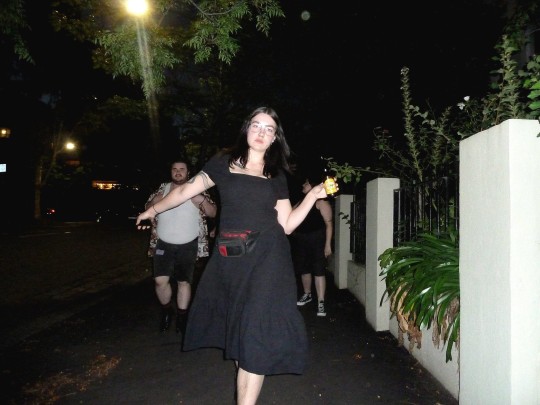
Bloodletter and I are So Hot honestly ... gahehehehhehheheh 🥰
#first relationship ive been in where im not completely dominated by anxiety on the outset. we're present focused. we're thriving.#we're in our honeymoon phase and aware it will fade into something different but we're cool with that and not worrying abt it. we're sexy#what more do u need#bloodletter#self
96 notes
·
View notes
Text
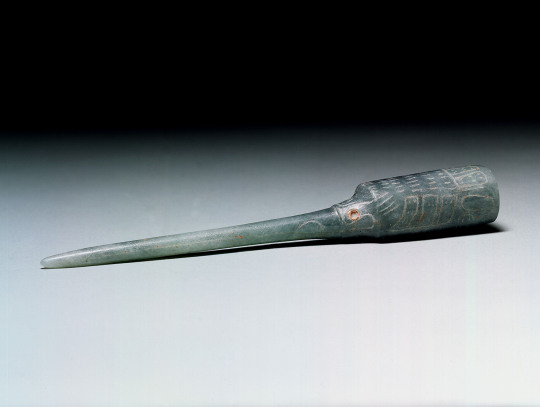
Hummingbird Bloodletter
Olmec, Middle Preclassic, 900-300 BCE
The act of bloodletting played a central role in the rituals of many ancient Mesoamerican cultures. In a typical bloodletting ritual, rulers or ritual specialists cut or pierced their ears, cheeks, tongues, or genitals. In representations of these rituals, the drops of blood are collected on papers in a basket, presumably to be burned later as an offering or communion with the gods. Although our most abundant evidence for bloodletting comes from the later Maya and Aztec cultures, this practice can be traced back in time to the Pre- Classic period and, in the case of this object, to the Olmec culture.
109 notes
·
View notes
Text
Court chapters 48-51



Click to see the rest of the snark & image descriptions




Chapter 48
So I do, more than a little surprised that I haven’t done so already. And that’s when hell really breaks loose.
Chapter 48 summary: Hudson is naturally worried that if Grace touches the string that ties Cyrus to the gargoyles, that Grace will be poisoned. The bloodletter says that Grace has been poisoned since she was conceived… but it’s only her demigod bloodline that’s keeping her alive from it. And also the reason why Cyrus’s bite didn’t kill her.
As the three of them go to do this, the bloodletter tells them that she’s stopped time EVERYWHERE so that Grace can do this. But Hudson standing around and asking more questions is wasting time.
So Grace starts to try and connect with them. After the second attempt, Alistair mentally joins her, and keeps yelling out encouragement. And I think that my long-time followers know what I’m going to say about this endless scene: I don’t mind it, but it goes on for way too long. We’re on page ~260 of 949! Brevity is the soul of wit, and I don’t think the author has ever learned that.
Chapter 49
“Any closer and I’d have had an icicle through some things that icicles should never, ever go through.”
I think the author was aiming for indicating Flint’s penis, but like… Icicles should probably never go through ANY part of your body.
“Then again, you and I rarely see eye to eye on anything, do we, Cassia?”
Chapter 49 summary: In her mental struggle to connect with the gargoyles, Grace touched the green demigod string inside of her. When she released it at the end of the previous chapter, the world violently shook. This chapter was everybody dodging the rocks and ice that Grace accidentally sent scattering.
After the world calmed down, the bloodletter fixed everything with her powers, so it’s like it never happened.
Chapter 50
Surprise registers in the Historian’s eyes, followed quickly by annoyance. And then he snaps his fingers. And Hudson disappears.
Chapter 50 summary: Randomly, this guy shows up in the bloodletter’s cave. For the first time in three books, we get her name, which is Cassia. This dude's name is Jikan, and he has pierced nipples. (A fact that the narration reminded us of TWICE.) He is literally the god of time, and he is there to fix Grace’s “latest mess”. It takes way too long to get to this singular point, but what else is new in this book? When Hudson insists that he’s going with Grace, Jikan makes him disappear.
Chapter 51
The Historian grins, and somehow it’s even scarier-looking than his frown. “You’ll see.”
Chapter 51 summary: Grace threatens to touch her green demigod string again if Jikan won’t bring Hudson back. So he does.
He then pulls out some knitting needles and proceeds to knit strands of time together. While listening to a One Direction song. However, it’s only the chorus over and over. So even Grace is annoyed by it by the time he’s finished.
However, Grace is one of three people who can see the finished product, and all of her friends are baffled by the entire thing. Jikan warns her that she shouldn’t touch it, or else they’ll get broken again. And then he kind of pizza-tosses it up into the air, and tells them to wait and see.
#Crave series#Court (Crave 4)#chapter 48#chapter 49#Chapter 50#Chapter 51#Hudson Vega#Grace (Crave)#the bloodletter#Alistair (Crave)#Flint (Crave)#use your words#plot? what plot?#brevity is the soul of wit
0 notes
Text
I just realised I never gave any good photos of all the bloodletters, hang on.
First my armies on parade submissions.

Then we got the comand trio (musician, banner/icon, and leader)
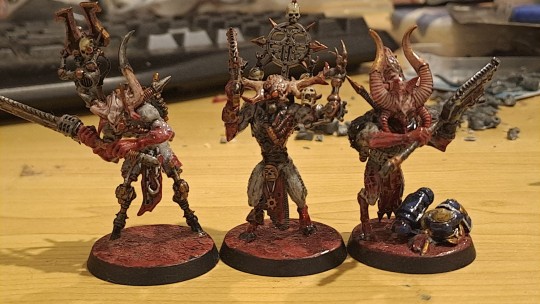
Four more freaks.
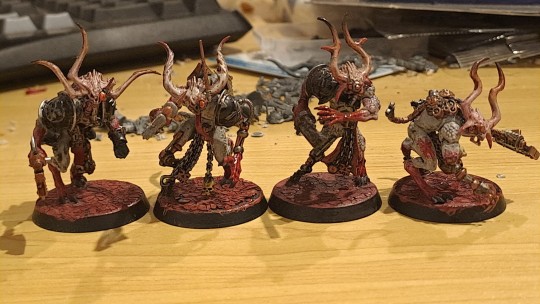
And the tree who we don't trust to hold their weapons, so we attached them.
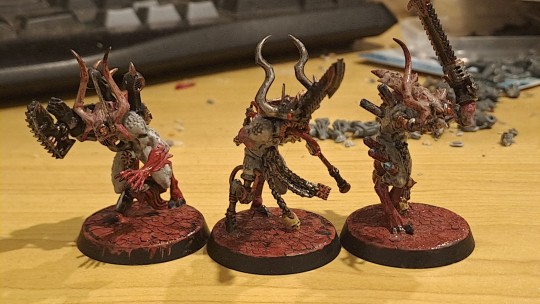
And then the paint scheme test for the blue horrors, and a test daemonette.
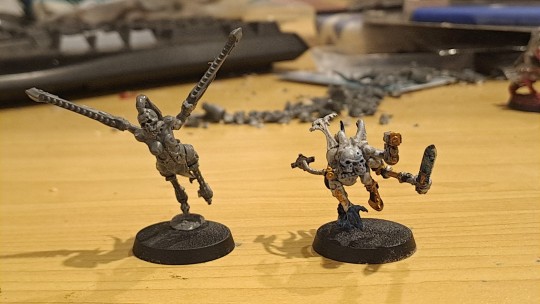
I'm thinking to build more daemonettes and fix up the pink and blue horrors tomorrow as a stream, I'll post an announcement or something if I do.
Also a vague plan I have for this is to finish up infantry for the main four gods, plaguebearers last, and a possible toss up between flesh hounds, blood crushers, or a great unclean one.
#warhammer#kitbash#miniature#miniatures#miniature painting#warhammer 40k#daemons#update#pink horror#bloodletter#blue horror#daemonette#chaos#chaos daemons#my art
26 notes
·
View notes
Text

Imperial Fists vs Khorne Daemons
by Igor Sid
#imperium#adeptus astartes#astartes#imperial fists#chaplain#chaos#khorne#daemon#bloodletter#bloodthirster#bolter#battle#igor sid#40k
90 notes
·
View notes
Text
Why the Fed wants to crush workers
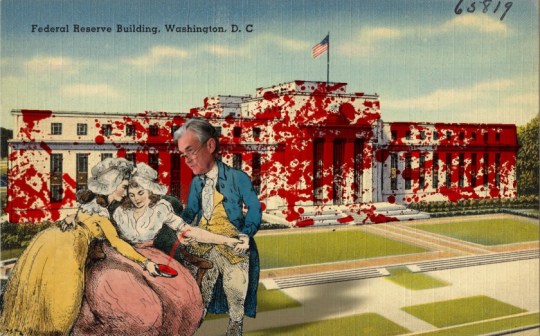
The US Federal Reserve has two imperatives: keeping employment high and inflation low. But when these come into conflict — when unemployment falls to near-zero — the Fed forgets all about full employment and cranks up interest rates to “cool the economy” (that is, “to destroy jobs and increase unemployment”).
An economy “cools down” when workers have less money, which means that the prices offered for goods and services go down, as fewer workers have less money to spend. As with every macroeconomic policy, raising interest rates has “distributional effects,” which is economist-speak for “winners and losers.”
Predicting who wins and who loses when interest rates go up requires that we understand the economic relations between different kinds of rich people, as well as relations between rich people and working people. Writing today for The American Prospect’s superb Great Inflation Myths series, Gerald Epstein and Aaron Medlin break it down:
https://prospect.org/economy/2023-01-19-inflation-federal-reserve-protects-one-percent/
Recall that the Fed has two priorities: full employment and low interest rates. But when it weighs these priorities, it does so through “finance colored” glasses: as an institution, the Fed requires help from banks to carry out its policies, while Fed employees rely on those banks for cushy, high-paid jobs when they rotate out of public service.
Inflation is bad for banks, whose fortunes rise and fall based on the value of the interest payments they collect from debtors. When the value of the dollar declines, lenders lose and borrowers win. Think of it this way: say you borrow $10,000 to buy a car, at a moment when $10k is two months’ wages for the average US worker. Then inflation hits: prices go up, workers demand higher pay to keep pace, and a couple years later, $10k is one month’s wages.
If your wages kept pace with inflation, you’re now getting twice as many dollars as you were when you took out the loan. Don’t get too excited: these dollars buy the same quantity of goods as your pre-inflation salary. However, the share of your income that’s eaten by that monthly car-loan payment has been cut in half. You just got a real-terms 50% discount on your car loan!
Inflation is great news for borrowers, bad news for lenders, and any given financial institution is more likely to be a lender than a borrower. The finance sector is the creditor sector, and the Fed is institutionally and personally loyal to the finance sector. When creditors and debtors have opposing interests, the Fed helps creditors win.
The US is a debtor nation. Not the national debt — federal debt and deficits are just scorekeeping. The US government spends money into existence and taxes it out of existence, every single day. If the USG has a deficit, that means it spent more than than it taxed, which is another way of saying that it left more dollars in the economy this year than it took out of it. If the US runs a “balanced budget,” then every dollar that was created this year was matched by another dollar that was annihilated. If the US runs a “surplus,” then there are fewer dollars left for us to use than there were at the start of the year.
The US debt that matters isn’t the federal debt, it’s the private sector’s debt. Your debt and mine. We are a debtor nation. Half of Americans have less than $400 in the bank.
https://www.fool.com/the-ascent/personal-finance/articles/49-of-americans-couldnt-cover-a-400-emergency-expense-today-up-from-32-in-november/
Most Americans have little to no retirement savings. Decades of wage stagnation has left Americans with less buying power, and the economy has been running on consumer debt for a generation. Meanwhile, working Americans have been burdened with forms of inflation the Fed doesn’t give a shit about, like skyrocketing costs for housing and higher education.
When politicians jawbone about “inflation,” they’re talking about the inflation that matters to creditors. Debtors — the bottom 90% — have been burdened with three decades’ worth of steadily mounting inflation that no one talks about. Yesterday, the Prospect ran Nancy Folbre’s outstanding piece on “care inflation” — the skyrocketing costs of day-care, nursing homes, eldercare, etc:
https://prospect.org/economy/2023-01-18-inflation-unfair-costs-of-care/
As Folbre wrote, these costs are doubly burdensome, because they fall on family members (almost entirely women), who have to sacrifice their own earning potential to care for children, or aging people, or disabled family members. The cost of care has increased every year since 1997:
https://pluralistic.net/2023/01/18/wages-for-housework/#low-wage-workers-vs-poor-consumers
So while politicians and economists talk about rescuing “savers” from having their nest-eggs whittled away by inflation, these savers represent a minuscule and dwindling proportion of the public. The real beneficiaries of interest rate hikes isn’t savers, it’s lenders.
Full employment is bad for the wealthy. When everyone has a job, wages go up, because bosses can’t threaten workers with “exile to the reserve army of the unemployed.” If workers are afraid of ending up jobless and homeless, then executives seeking to increase their own firms’ profits can shift money from workers to shareholders without their workers quitting (and if the workers do quit, there are plenty more desperate for their jobs).
What’s more, those same executives own huge portfolios of “financialized” assets — that is, they own claims on the interest payments that borrowers in the economy pay to creditors.
The purpose of raising interest rates is to “cool the economy,” a euphemism for increasing unemployment and reducing wages. Fighting inflation helps creditors and hurts debtors. The same people who benefit from increased unemployment also benefit from low inflation.
Thus: “the current Fed policy of rapidly raising interest rates to fight inflation by throwing people out of work serves as a wealth protection device for the top one percent.”
Now, it’s also true that high interest rates tend to tank the stock market, and rich people also own a lot of stock. This is where it’s important to draw distinctions within the capital class: the merely rich do things for a living (and thus care about companies’ productive capacity), while the super-rich own things for a living, and care about debt service.
Epstein and Medlin are economists at UMass Amherst, and they built a model that looks at the distributional outcomes (that is, the winners and losers) from interest rate hikes, using data from 40 years’ worth of Fed rate hikes:
https://peri.umass.edu/images/Medlin_Epstein_PERI_inflation_conf_WP.pdf
They concluded that “The net impact of the Fed’s restrictive monetary policy on the wealth of the top one percent depends on the timing and balance of [lower inflation and higher interest]. It turns out that in recent decades the outcome has, on balance, worked out quite well for the wealthy.”
How well? “Without intervention by the Fed, a 6 percent acceleration of inflation would erode their wealth by around 30 percent in real terms after three years…when the Fed intervenes with an aggressive tightening, the 1%’s wealth only declines about 16 percent after three years. That is a 14 percent net gain in real terms.”
This is why you see a split between the one-percenters and the ten-percenters in whether the Fed should continue to jack interest rates up. For the 1%, inflation hikes produce massive, long term gains. For the 10%, those gains are smaller and take longer to materialize.
Meanwhile, when there is mass unemployment, both groups benefit from lower wages and are happy to keep interest rates at zero, a rate that (in the absence of a wealth tax) creates massive asset bubbles that drive up the value of houses, stocks and other things that rich people own lots more of than everyone else.
This explains a lot about the current enthusiasm for high interest rates, despite high interest rates’ ability to cause inflation, as Joseph Stiglitz and Ira Regmi wrote in their recent Roosevelt Institute paper:
https://rooseveltinstitute.org/wp-content/uploads/2022/12/RI_CausesofandResponsestoTodaysInflation_Report_202212.pdf
The two esteemed economists compared interest rate hikes to medieval bloodletting, where “doctors” did “more of the same when their therapy failed until the patient either had a miraculous recovery (for which the bloodletters took credit) or died (which was more likely).”
As they document, workers today aren’t recreating the dread “wage-price spiral” of the 1970s: despite low levels of unemployment, workers wages still aren’t keeping up with inflation. Inflation itself is falling, for the fairly obvious reason that covid supply-chain shocks are dwindling and substitutes for Russian gas are coming online.
Economic activity is “largely below trend,” and with healthy levels of sales in “non-traded goods” (imports), meaning that the stuff that American workers are consuming isn’t coming out of America’s pool of resources or manufactured goods, and that spending is leaving the US economy, rather than contributing to an American firm’s buying power.
Despite this, the Fed has a substantial cheering section for continued interest rates, composed of the ultra-rich and their lickspittle Renfields. While the specifics are quite modern, the underlying dynamic is as old as civilization itself.
Historian Michael Hudson specializes in the role that debt and credit played in different societies. As he’s written, ancient civilizations long ago discovered that without periodic debt cancellation, an ever larger share of a societies’ productive capacity gets diverted to the whims of a small elite of lenders, until civilization itself collapses:
https://www.nakedcapitalism.com/2022/07/michael-hudson-from-junk-economics-to-a-false-view-of-history-where-western-civilization-took-a-wrong-turn.html
Here’s how that dynamic goes: to produce things, you need inputs. Farmers need seed, fertilizer, and farm-hands to produce crops. Crucially, you need to acquire these inputs before the crops come in — which means you need to be able to buy inputs before you sell the crops. You have to borrow.
In good years, this works out fine. You borrow money, buy your inputs, produce and sell your goods, and repay the debt. But even the best-prepared producer can get a bad beat: floods, droughts, blights, pandemics…Play the game long enough and eventually you’ll find yourself unable to repay the debt.
In the next round, you go into things owing more money than you can cover, even if you have a bumper crop. You sell your crop, pay as much of the debt as you can, and go into the next season having to borrow more on top of the overhang from the last crisis. This continues over time, until you get another crisis, which you have no reserves to cover because they’ve all been eaten up paying off the last crisis. You go further into debt.
Over the long run, this dynamic produces a society of creditors whose wealth increases every year, who can make coercive claims on the productive labor of everyone else, who not only owes them money, but will owe even more as a result of doing the work that is demanded of them.
Successful ancient civilizations fought this with Jubilee: periodic festivals of debt-forgiveness, which were announced when new monarchs assumed their thrones, or after successful wars, or just whenever the creditor class was getting too powerful and threatened the crown.
Of course, creditors hated this and fought it bitterly, just as our modern one-percenters do. When rulers managed to hold them at bay, their nations prospered. But when creditors captured the state and abolished Jubilee, as happened in ancient Rome, the state collapsed:
https://pluralistic.net/2022/07/08/jubilant/#construire-des-passerelles
Are we speedrunning the collapse of Rome? It’s not for me to say, but I strongly recommend reading Margaret Coker’s in-depth Propublica investigation on how title lenders (loansharks that hit desperate, low-income borrowers with triple-digit interest loans) fired any employee who explained to a borrower that they needed to make more than the minimum payment, or they’d never pay off their debts:
https://www.propublica.org/article/inside-sales-practices-of-biggest-title-lender-in-us
[Image ID: A vintage postcard illustration of the Federal Reserve building in Washington, DC. The building is spattered with blood. In the foreground is a medieval woodcut of a physician bleeding a woman into a bowl while another woman holds a bowl to catch the blood. The physician's head has been replaced with that of Federal Reserve Chairman Jerome Powell.]
#pluralistic#worker power#austerity#monetarism#jerome powell#the fed#federal reserve#finance#banking#economics#macroeconomics#interest rates#the american prospect#the great inflation myths#debt#graeber#michael hudson#indenture#medieval bloodletters
463 notes
·
View notes
Text

kurogane tries to teach fay how to play bloodborne
#kurofai#he also recommends an arc build but fay really does end up liking the reiterpallasch. do you see my vision#they both have blt builds but kuro is focused on str and he uses the bloodletter and also the chikage in his off hand#fay is a skl/blt build and uses the reiter and the bowblade. i have thought about this very carefully
59 notes
·
View notes